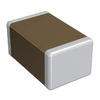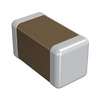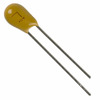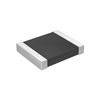Guide to NEMA 17 Stepper Motors: How They Work, Advantages and Disadvantages, How to Use Them, and Their Application Scenarios
2024-01-19
14073
In today's highly automated technological field, the NEMA 17 stepper motor, with its precise control capability and robust adaptability, has become an essential component of precision control systems. This article aims to delve into the construction, characteristics, and control strategies of the NEMA 17 stepper motor in advanced applications. From its unique step angle characteristics and efficient energy conversion capabilities to its performance in various application scenarios, we will analyze the technical details and application advantages of this motor in detail. Particularly in areas like 3D printers, CNC machines, and robotic technologies, the NEMA 17 stepper motor demonstrates its irreplaceable importance with its high positioning accuracy and strong holding torque. We will also explore its coil layout, current control, and driver configuration, which collectively determine the motor's performance and efficiency.
What is NEMA 17
NEMA 17 Wiring Configuration
Characteristics and Specifications of NEMA 17
Advantages and Disadvantages of NEMA 17
NEMA 17 Stepper Motor Usage and Control Strategies
NEMA 17 Stepper Motor Applications
Conclusion
FAQ
What is NEMA 17

stepper motor
NEMA 17 stepper motors are the cornerstone of precision control systems and excel at providing detailed angle management. Its notable feature is the 1.8° step angle, which helps the motor shaft rotate accurately with each step. A complete 360° rotation requires 200 steps. This complex stepping has proven to help improve positioning accuracy, making the motor an excellent choice for 3D printers, CNC machines and robots where accuracy is critical.
NEMA 17 motors operate on standard 12V and are capable of expertly managing up to 1.2A per phase. This capability plays a key role in ensuring maximum holding torque. With a peak holding torque of up to 3.2 kg-cm, the motor is ideally suited to handle the large loads found in automation equipment.
NEMA 17 wiring configuration

How NEMA 17 Works
The wiring configuration is an aspect worth noting, NEMA 17 motors include six color-coded wires with exposed lead ends. The functions of these wires vary depending on whether they are in a unipolar or bipolar stepper motor driver.
The motor's windings are divided into two groups: the first contains black, yellow, and green conductors, and the second contains red, white, and blue conductors. This special arrangement is critical for efficient management of current and torque. Within these windings, the direction and strength of the current flow complexly influence the resulting magnetic field and thus torque and speed. Careful management of these windings is critical to ensuring stable, efficient operation of the motor under varying load conditions.
Furthermore, proper wiring configuration goes beyond mere performance considerations; it significantly affects the life of the motor. Improper wiring can cause problems such as motor overheating or reduced torque, while correct settings can maximize efficiency and output. Therefore, in the design and implementation of stepper motor control systems, attention must be paid to these complex issues.
|
Pin Number |
Pin Name |
wire color |
|
1 |
Coil1 |
Black |
|
2 |
Coil2 |
Yellow |
|
3 |
Coil3 |
Green |
|
4 |
Coil4 |
Red |
|
5 |
Coil5 |
White |
|
6 |
Coil6 |
Blue |
Characteristics and Specifications of NEMA 17
Characteristics
- Efficiently converts current into torque.
- High durability and accuracy.
- Suitable for various devices like Makerbot, MBot, etc.
- Moderately sized for easy integration.
Specifications
- Step angle of 1.8 degrees.
- Weight of 350 grams.
- Rated current of 1.2A per winding.
- Output shaft diameter of 5mm.
- Control dimensions of 42.3mm×48mm (excluding shaft).
- 4-wire, 8-inch leads.
- Holding torque of 3.2 kg-cm.
- Rated voltage of 4V, operating voltage of 12V DC.
- The inductance of 2.8 mH per winding.
- Lead length of 30 cm.
- Operating temperature range of -10 to 40°C.
- Holding torque of 22.2 oz-in.
Advantages and Disadvantages of NEMA 17

Structure of stepper motors
Advantages of stepper motors
The angle of rotation of the rotor is determined by the number of pulses applied. The stepper motor rotates unevenly, but the steps have a certain value. So to turn the axis to the desired position we simply apply a known number of pulses.
The position depends on the input pulse, enabling feedback-free positioning. One step, one impulse. With the number of pulses provided, the engine enters this position.
The engine delivers full torque in stop mode. This is good because the powered motor doesn't need a brake to hold the position of the shaft, you can brake it with the help of the driver.
Precise positioning and repeatability. A good stepper motor has an accuracy of 3% to 5% of the pitch value. This error does not accumulate from one step to the next because the number of steps per engine revolution is constant, which always results in a 360-degree turn.
High reliability. The high reliability of the motor is due to the absence of brushes. The service life is determined by the service life of the bearing.
Possibility of obtaining low RPM. To obtain a lower motor speed, it is enough to slow down the pulse rate, then the motor will go slower and the speed will be small.
High torque at low speed. High torque at low speeds eliminates the need for a gearbox, simplifying equipment design.
A considerable speed range can be covered. The speed of the motor is directly proportional to the frequency of the input pulses, by delivering them faster or slower we also affect the rotational speed.
Disadvantages of stepper motors
Stepper motors are characterized by the phenomenon of resonance. Stepper motors have an inherent resonant frequency. This is because the rotor will oscillate for some time before locking into its final position after supplying current to the windings, and the greater the inertia of the rotor, the stronger the oscillation. Resonance can lead to increased noise, vibration, and reduced engine torque. One way to defeat resonance is to increase pitch divisions. Small movements in micro-stepping do not require long periods of acceleration and rotor fixation, stopping quickly between steps and increasing the walking frequency above the resonant frequency.
Since there is no feedback from the operation, position control may be lost. If the force on the shaft exceeds what the motor can produce, it will start skipping steps. Since there is no feedback from the motor, the controller has no way of knowing that, even if the motor starts spinning again, it is starting from the wrong operating position. To compensate for this shortcoming, you can use a servo stepper motor or increase the torque on the shaft by increasing the voltage, tuning the drive to a higher current, or replacing the motor with a more powerful one.
Energy is consumed regardless of load. The stepper motor in the neutral position locks at full torque. He also walks with plenty of momentum. Therefore, it continues to consume power without much dependence on the load on the shaft. We can reduce the overall energy consumption of the motor by using a driver to reduce the current provided in hold mode.v


It's hard to work at high speed. At high speeds, stepper motors lose a lot of torque, and when a certain speed is reached, the torque becomes so low that the shaft cannot continue to turn. At this point, the engine stops and hums at the supplied pulse frequency. This disadvantage can be eliminated by increasing the supply voltage, which will increase the torque at higher and lower rpm, using a more advanced drive, switching to full-stepping engine control at high speeds, or simply replacing the stepper with a servo drive, which It is designed for high speed.
Stepper motors are not the most energy-saturated electric drive in terms of power density per gram of weight.
NEMA 17 Stepper Motor Usage and Control Strategies

Utilized NEMA 17 electronic items
To understand how to use a NEMA 17 stepper motor, you must delve into its coil layout and working principles. This is critical for precise control and optimized performance. The mechanism of an electric motor depends on electromagnetic interactions within its internal coils. Here, the trick to controlling the angle and speed of motor rotation is to manipulate the direction and strength of the current in these coils.
High current draw is a hallmark of NEMA 17 in demanding applications. To solve this problem, it is recommended to use a specialized stepper motor driver IC such as the A4988. The A4988 driver excels at fine-tuning current control. This precision plays a key role in mitigating heat build-up within the motor, thereby improving step accuracy. Uniquely, the drive accommodates up to five step resolutions - full step, half step, quarter step, eighth step and 16th step. This versatility is essential for a variety of applications requiring varying step accuracy.
The wiring aspect of NEMA 17 is interesting. Its six wires are connected to two split windings, a design that allows operation in both unipolar and bipolar modes. In unipolar mode, the tap of the center winding is connected to the positive supply. The winding ends are alternately connected to ground through the drive circuit. This setup facilitates low current operation and is ideal for applications where high torque is not a priority. In contrast, bipolar mode has both windings connected directly to the driver. This allows current to flow in both directions, enhancing torque and control.
In a real-life scenario, the microstepping settings of the motor driver can change the performance of the stepper motor. Microstepping is a complex control strategy that enables a motor to perform motion in increments smaller than the standard step size. This results in smoother motion and higher resolution. For example, using 1/16 microstepping means that each standard 1.8° step is further divided into 16 finer steps, significantly improving positioning accuracy.
Efficient use of NEMA 17 stepper motors depends on precise control of drive current and step resolution. Additionally, a thorough understanding and correct configuration of its coil windings is crucial. This approach not only improves the operating efficiency and performance of the motor, but also helps extend its service life, especially where high loads and long periods of operation are involved.
NEMA 17 stepper motor applications

3D printer with bright green filament
The step motors are applicable in systems that require precise control and other critical commercial applications. Also, they are commonplace in applications where the intention is to overcome the complexity of a feedback control system. The following are some of the application examples where the electric motor (s) are helpful:
- CNC machines
- Printer motors, e.g., in a 3D printer motor
- Useful in linear actuators
- Precise control machines
- Hard drive
- 3D printer/CNC or prototyping machines (e.g., RepRap)
- Laser cutters
Conclusion
This is what this article is all about, as we have just explained. The construction of a stepper motor may seem complex, but its working principle is simple, and a deep understanding and proper utilization of the motor's unique characteristics and control methods will allow engineers and users to realize its full potential.
FAQ
Why use NEMA 17?
NEMA 17 stepper motors are known for their high torque and reliability It has a step angle of 1.8 degrees and a frame size of 42mm x 42mm, making them a compact and powerful option for precise motion control, They are widely used in 3D printers and CNC machines.
What does 17 mean in NEMA 17?
NEMA 17 stepper motors are those that have a 1.8-degree step angle (200 steps/revolution) with a 1.7 x 1.7-inch faceplate. NEMA 17 steppers typically have more torque than smaller variants, such as NEMA 14, and have a recommended driving voltage of 12-24V. These steppers are also RoHS compliant.
How long do stepper motors last?
The typical lifetime of a stepper motor is 10,000 operating hours. This approximates to 4.8 years given that the motor operates one eight-hour shift per day. Motor lifetime may vary in regards to user application and how rigorously the motor is run.
 ABOUT US
Customer satisfaction every time. Mutual trust and common interests.
ABOUT US
Customer satisfaction every time. Mutual trust and common interests.
function test. The highest cost-effective products and the best service is our eternal commitment.
Hot Article
- Are CR2032 and CR2016 Interchangeable
- MOSFET: Definition, Working Principle and Selection
- Relay Installation and Testing, Interpretation of Relay Wiring Diagrams
- CR2016 vs. CR2032 What’s the difference
- NPN vs. PNP: What's the Difference?
- esp32 vs stm32: which microcontroller is better for you?
- LM358 Dual Operational Amplifier Comprehensive Guide: Pinouts, Circuit Diagrams, Equivalents, Useful Examples
- CR2032 VS DL2032 VS CR2025 Comparison Guide
- Understanding the Differences ESP32 and ESP32-S3 Technical and Performance Analysis
- Detailed Analysis of RC Series Circuit
 CR2032 VS DL2032 VS CR2025 Comparison Guide
CR2032 VS DL2032 VS CR2025 Comparison Guide
2024-01-24
 What Is a Reed Switch and Modern Applications of Reed Switches
What Is a Reed Switch and Modern Applications of Reed Switches
2024-01-19
Hot Part Number
 GMK212BBJ106MG-T
GMK212BBJ106MG-T LMK212AC6106MD-T
LMK212AC6106MD-T 12062A101KAT2A
12062A101KAT2A GRM2195C2A470JZ01D
GRM2195C2A470JZ01D EMK042CG070DC-FW
EMK042CG070DC-FW GRM1556R1H150GZ01D
GRM1556R1H150GZ01D TAP156M010SRS
TAP156M010SRS TAP685M035SRS
TAP685M035SRS TPSD227K004R0050
TPSD227K004R0050 CC1210MKX5R5BB226
CC1210MKX5R5BB226
- EP20K1500EBC652-1X
- ST16C552ACJ68TR-F
- W25Q32FVSSIG
- MPXHZ6115A6T1
- SKIIP20NAB12T45
- TPS560430XFDBVT
- STM32L071RBT6
- TPS62050DGSR
- TAS5805MPWP
- SPC5606BK0MLL6
- MIMXRT1051DVL6B
- TMS5700332BPZQQ1
- S25FL064P0XMFB003
- VIPER26HDTR
- T491B226M016AT7280
- LDLN025J2925R
- LMP8358MTX/NOPB
- TD62783AFNG
- ADW95037Z-06
- AR5414A-001
- CY24204ZC-3T
- HD643180XOF8L
- LC75884WHS-QD-TLM
- MAX9202ESD
- S-8254AAKFT-TB-S
- SST29VF040-70-4I-WHE
- HMU16JC-35
- OR2C08A-4S208-DB
- MAX5354EUA
- S912ZVMC25MKK
- BCM7013ZZKFB50G
- HSU277TRF
- LMZ10504TZX-ADJ
- MTC20454TQ-1
- R8A77300C200FPV
- SH77P1652U
- CP4485B4-133-DB
- ACS759KCB-150B-PSS-T
- PSMN1R7-60BS